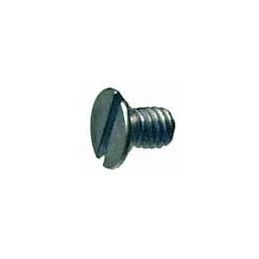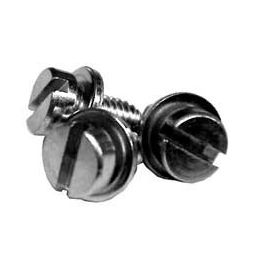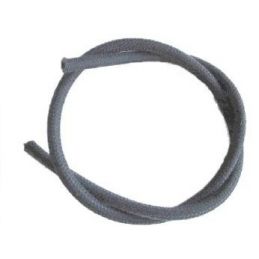Axle Boots
-Written by Steve Phillips for Hot VWs magazine-
In this article, I’ll be talking about axle boots. Most of you know what an axle boot is, but for those of you who do not, this is the boot that goes around the axle tube on a swing axle transmission or around the axle and CV of an IRS transmission. If you have a stock Bug, Ghia, Type 3 up to 1968, or Bus up to 1967, you have swing axle. If you have a 1968 and later Bus, 1969 and later Bug, Ghia, Type 3, or 1973-1974 Thing, you have IRS.
Swing axle transmissions have one pivot point near the transmission on each side and the axle is in a tube. The boot covers this pivot point, keeps dirt out of the joint and oil in the transmission. They are highly important and if you have a ripped boot, you should replace it as soon as possible. There are seamless boots and other boots that have a seam and bolt together. There are two types of boots that have seams: OEM style and aftermarket. We, at Wolfgang International, carry both of these options along with the seamless. The OEM style we carry is German and while I admit they are easier to put on, they don’t last very long. Installing these is not enjoyable so you can bet I’m not too keen on having to replace them frequently. The aftermarket ones have more bolts to hold the seam together and tend to be more challenging to put on, but they do last longer. Worth the effort? Yes
When installing a seamed boot, both the OEM and the aftermarket boots go on the same. The first step is to get the car up onto ramps. Why ramps and not jack stands? If we load the tire, the axle tube will be off the transmission fork. If the axle is hanging, you might see the boot resting on the fork and that makes it a pain to get the old one off and the new one on. Once you have the rear up, you can crawl under and see what you’re dealing with. Bring a standard screwdriver and a razor blade with you. Locate and remove the hose clamps on each end of the boot, then slide the boot down the tube so you can get to it. Using your razor blade, cut the boot off and then wipe off any dirt that has fallen into the area where the boot goes. Take your new boot, place it around the tube, mate the seam together and bolt it into place using the new hardware from your kit. Don’t worry about placing it up against the transmission just yet. You’ll want to slowly tighten the bolts. Do NOT over tighten. Watch the seam and if it starts to flare out, you’re tightening it too much. On the OEM style boots, the nuts that come in the kit usually are not a lock nut so when I’m done, I put a dab of 3M super weather strip adhesive (gorilla snot) on the nut and threads. This helps to prevent the nut from backing off. The aftermarket nuts are nyloc and won’t come loose. Once you have the seams together, slide the boot up to the flange of the transmission and make sure it’s all the way on the flange. Install your large hose clamp but don’t tighten it yet. Rotate the boot so the seam is not straight up. 2 or 10 o’clock is best. If you install the seam straight up, every time the axle goes up and down, it will work the seam causing it to rip sooner. Once it’s in position, go ahead and tighten that larger hose clamp. Once the larger one is tight, put the smaller one on and tighten it as well. Note that if the transmission is out of the car or not bolted to the spring plate, leave the small clamp loose until it is. The tube bolts onto the spring plate. If you don't keep the clamp loose, it will twist around the tube and could cause premature ripping.
I have found seamless boots to be the best, period. I've had really good luck with the EMPI brand ones. Only downfall is that the axle tubes have to be off of the car to put these on. Is it worth taking the tubes off just to install seamless boots? No! That being said, if the transmission is already out, hell yes! At first glance, you're going to say, “But Steve! You have to press the tube apart to put these on.” Not true at all. We are going to stretch them around the bell of the tube. I know, I know, you're probably thinking there is no way you're going to stretch a boot with a 1.5” hole over 4.5” bell. I'm here to tell you that you can! I do it all the time and I'm going to explain to you how it's done.
First, mount the axle tube in the vise and clean up the axle tube bell. Make sure there are no burrs or sharp edges. Just to be sure, I still do a quick run around the bell to eliminate any possibility for sharp edges. Now, grab your spaghetti pot. If the lady of the house is around, you might wait until she leaves before you take that pot into the garage. Remember, its easier to as for forgiveness than for permission. Put enough hot water into the pot to cover the boot. While the water is heating up, turn the boot inside out and put oil or a lube of some sort onto the bell. Now, for the fun part! Get the boot out of the water and stretch the large end of the boot over the bell as far as you can. The small end will be against the edge of the bell. Grab two large Phillip screwdrivers and put them through the small end of the boot. Cross the screw drivers around the backside of the tube. Spread the handles and this will stretch the small end around the bell. Yes, you can do it! Now, you have the boot on, but it's inside out so you'll need to work on getting it flipped back around. If you didn't turn the boot inside out, you'll quickly find that the orientation is incorrect and you'll be taking the boot off and turning it inside out to put it back on. Trust me, I've been there, done that, and bought the T-Shirt. Install the large clamp on the tube retaining plate and tighten. Install the small clamp, but leave this one loose until the transmission is back in the car and the tube is bolted to the spring plate.
IRS folks, now, it's your turn. IRS stands for independent rear suspension, NOT your favorite uncle Sam. With these, you have two pivot points on each side, so two boots on each side of the car. The axle is open. In other words, when the wheel is spinning you can see the axle turning. When these boots rip, the dirt causes damage in a hurry, as it gets into the CV joint bearings. Good quality CV joints are not cheap either so if you see a ripped boot, it might be a good time to replace them. Most of these style boots are seamless. I have seen seamed ones, but everyone I have talked to, says they are basically a joke and do not work. This boot tends to open up at the seam or tear along the seam, if the glue holds, so don't go there.
There are two different stock sizes for the IRS boots. Buses and Things require a larger boot than the Bugs, Ghias, and Type 3s. Make sure you're wearing some clothes you don't care about because CV joint grease gets everywhere just from looking at it. First, we need to take the axles off. For this setup, you'll want to use jack stands rather than ramps. Reason being, we need the ability to spin the wheel. With that said, make sure the emergency brake is disengaged. Get under the car and bring a standard small screwdriver. You'll need this to pick out the dirt and grease in the head of the CV joint bolt. You will find yourself either picking the dirt out or stripping the head. Choice is yours. My method is to pick the dirt out, then put my socket in the bolt and tap the socket with a hammer to get full engagement. With a ratchet or impact gun, unscrew the bolts one at a time. On these bolts, there are two different styles: 6 point or 12 point. Both are 6mm. Once you have all the bolts out, the axle with the joints will fall out. Take this greasy mess over to your vise. From there, I mount it onto the vise with one CV joint up. Pull the bolts out one by one and set them on the bench along with the plates, under the bolts. Grab your big roll of shop towels and clean the end of axle at the joint. Under that grease, is a clip. Use a pair of spreader pliers and try to get the clip off without ruining it. Now, with a standard screw driver, place the blade against the boot flange and hit the end of the screwdriver with a small hammer. What we are doing here is popping the flange off of the CV joint. Now grab the CV joint and pull straight up. Try not to tilt the joint. If you do, the CV joint will start to come apart which is not the end of the world, but they have to be put back together a certain way. Maybe that'll be the topic of the next article. If the joint doesn't come off easily, open the jaws in your vise and get them under the joint. In other words, pull the boot down and set the joint on the jaws of the vice. Now, with a brass punch, drive the axle out of the joint. It shouldn't take much. Very rarely are they stuck enough to have to put them into a press. Once the CV joint is off, you might find a conical washer. This washer puts pressure on the clip. Take this washer and throw it in the neighbor's yard. We wont be putting it back on. Even the factory books tell you not to use it. If you want to reuse it, you can, but getting the clip back on will be a pain in the ass. At this point, you can pull the old boot off or cut it off with a razor blade and grab your new boot. Side note, I have had the best luck with the EMPI boots. They seem to last longer than the German ones and I think it's because the rubber is better. Start with the small end of the axle. It's a stretch to fit so I use a small screw driver to get it on. You'll need to get it down past the splines. On factory axles, there are a set of ridges on the axle that the small end sits in. Get it to that point. Another note, do NOT pack the boot with grease. If you do, the spinning weight of the grease will rip the boot and and grease will be everywhere under the car. Now, you can put the CV joint back on. It's not a bad idea to service the joints at this time, but that's for another article, as well. Once the joint is all the way on the splines, you can re-install the clip. Grab your bolts and plate and rotate the boot so that the bolt goes into the holes of the joint. Do the same thing on the other end and on the other axle, then put them back on. Try not to angle the joint while handling the axle with the joints. If we get too much angle on the joint, one of the balls can fall out. Next, I take my CV joint grease bucket under the car with me and I'll pack the cup on the final drive coming out of the transmission and the cup of the stub axle with that grease. Then place the axle back into the transmission so the CV joint fits into the final drive flange. Push on one of the bolts as you rotate the axle and you will feel it drop a little once it has lined up with one of the holes. Thread that bolt in a few turns and do the same thing on another bolt. Once you have two bolts in, you can hand thread all the others in since you know that your holes are lined up correctly. After that, I go to the stub axle end and get the joint in the cup. You're going to do the same thing here but rotate the wheel instead of the axle to line up the bolt holes. Once they're hand tight, torque the bolts to 25 ft. lbs and that's it. You're done!
Keep in mind, these tips apply to stock vehicles. For off-road stuff, the process is the same, but the CV joints can be different, as well as the boots. If you have an off road vehicle, you'll need to take a look at what you have before you start buying boots. In conclusion, if your car is swing axle, you should replace the boots sooner than later. After you get the boot(s) replaced, you should check your transmission fluid. If you are IRS and have a ripped boot, replacements are necessary immediately to avoid having to replace expensive CV joints. It's a messy job, but it needs to be done.







